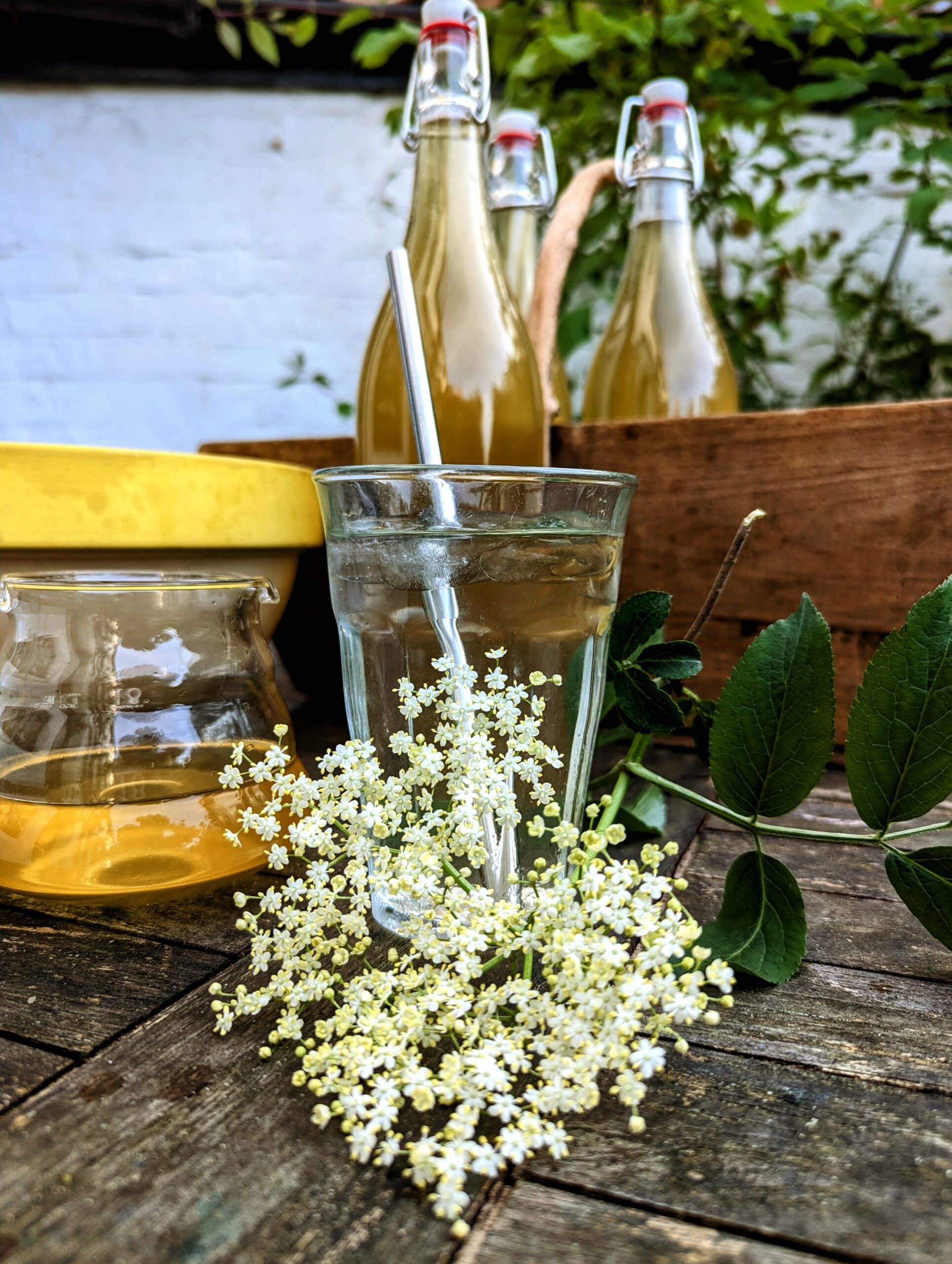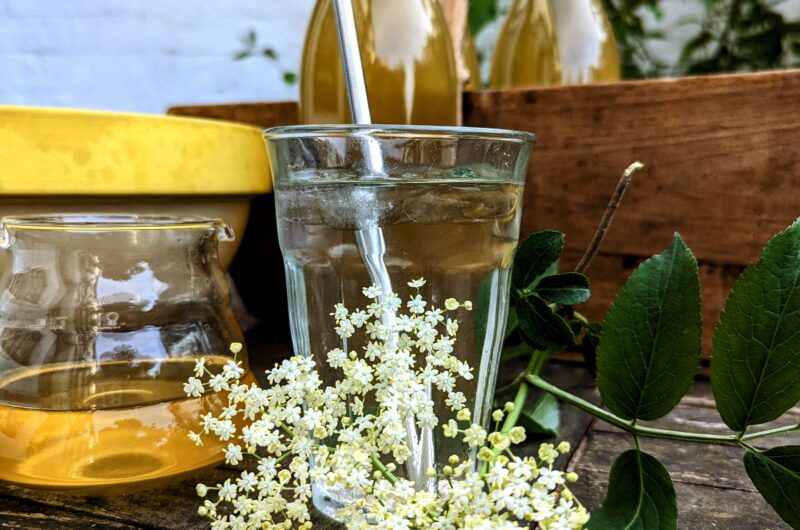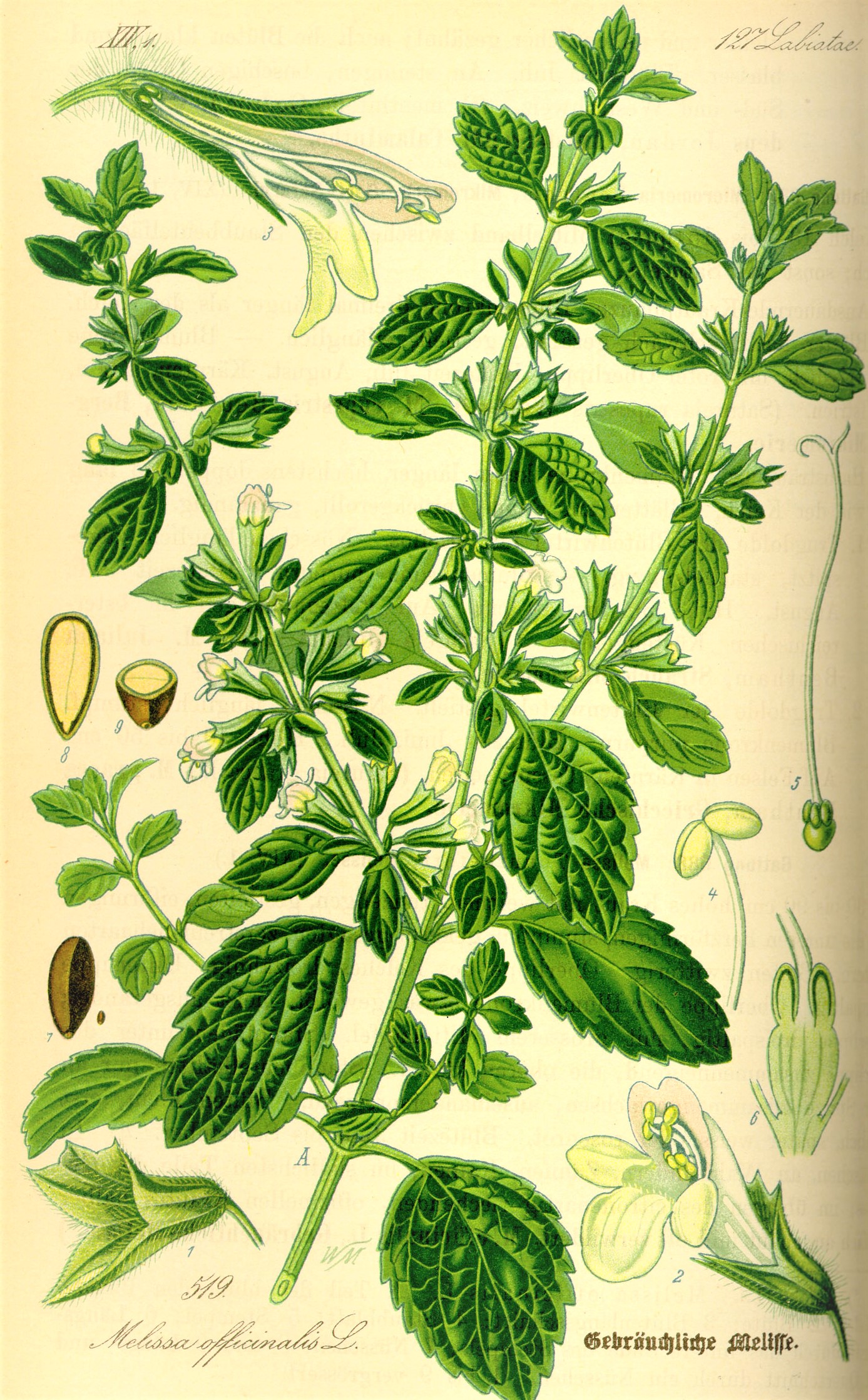Elderflowers are a true gem of the English countryside. These delicate, fragrant flowers bloom from late May to early July. Harvesting them is a joyful and rewarding experience. Not only are elderflowers a delight to the senses, but they are also a wonderful ingredient in many recipes, from cordials and syrups to cakes and teas. After many years of experimenting and tweaking I think I’ve come up with the best homemade Elderflower Cordial.
Elderflower foraging tips
If you’re planning on foraging elderflowers this season, which I think you are given that you’re on a page dedicated to doing so, here are some tips to make the most of your elderflower harvest:
- Choose the right time: Elderflowers are at their best when they are fully open and in full bloom. They are also most fragrant in the early morning, so it’s a good idea to go foraging at this time if possible. However, make sure you avoid harvesting during or after rain, as this can dilute the flavor of the flowers.
- Find the right location: Elderflowers grow on trees, so you’ll need to find a suitable elder tree to harvest from. Look for trees that are away from busy roads and industrial areas, as these can cause pollution that may affect the quality of the flowers. Also, make sure you have permission from the landowner before you start harvesting.
- Be gentle: Elderflowers are delicate and can bruise easily. It’s important to handle them gently. Use scissors to snip the flowers off the tree. Making sure to leave some flowers behind for pollinators and other insects. Also elderberries are important food sources for birds. No flowers, no berries.
- Check for insects: Elderflowers are a favorite of insects such as bees and butterflies, It’s important to check your flowers carefully for any unwanted guests before you start steeping them.
How do you identify elderflower?
Here are some tips on how to identify elderflower and make sure it isn’t other similar flowers:
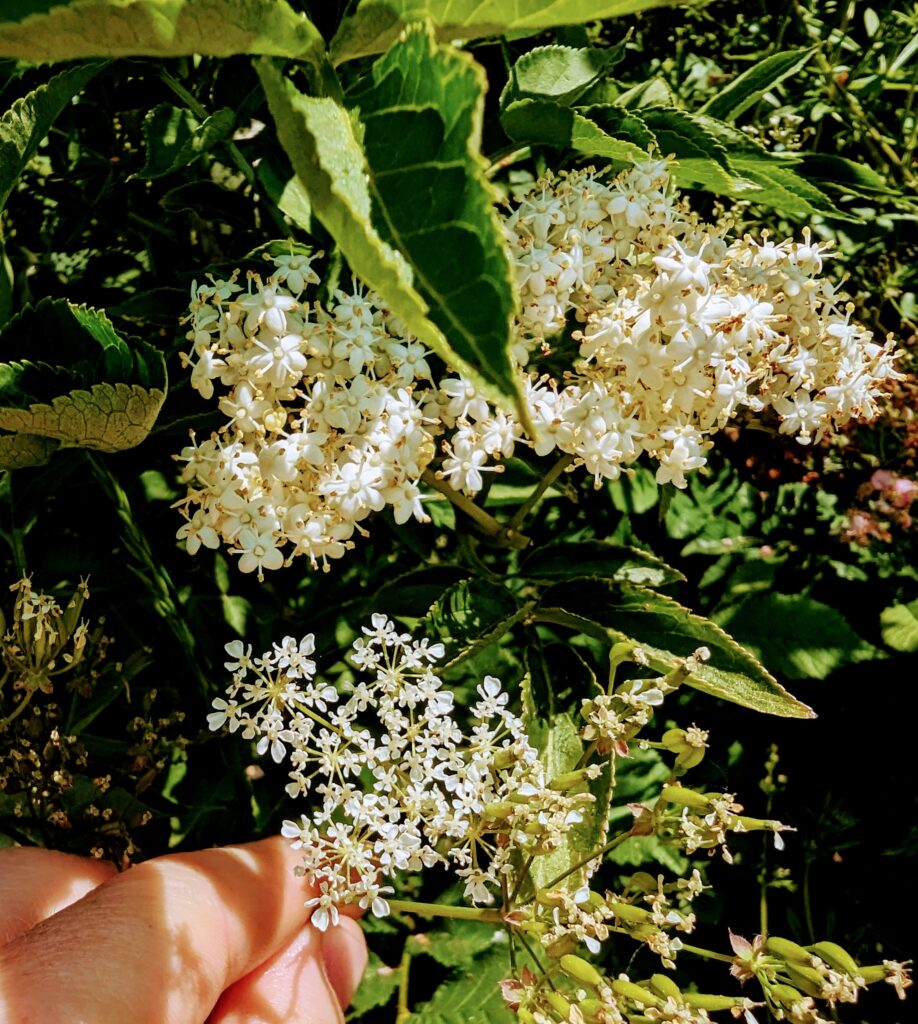
- Look for the smell. Elderflower has a distinctive, sweet, floral smell. If you can smell it, it’s a good sign that you’ve found the right plant.
- Check the leaves. Elderflower leaves are compound, with 5-7 leaflets. The leaflets are oppositely arranged and have serrated edges.
- Look at the flowers. Elderflower flowers are white and arranged in flat-topped clusters called umbels. The flowers are small and delicate, with five petals each.
- Be careful not to confuse elderflower with other similar flowers. Some common look-alikes include:
- Cow parsley: Cow parsley has similar-looking flowers, but the leaves are not compound and the flowers are arranged in umbels that are more rounded than those of elderflower.
- Hemlock: Hemlock is poisonous and should not be eaten. It has similar-looking leaves to elderflower, but the flowers are arranged in umbels that are smaller and more compact.
If you’re not sure whether you’ve found elderflower, it’s best to err on the side of caution and not eat it. Otherwise, you can always consult a field guide or an experienced forager for help identifying elderflower.
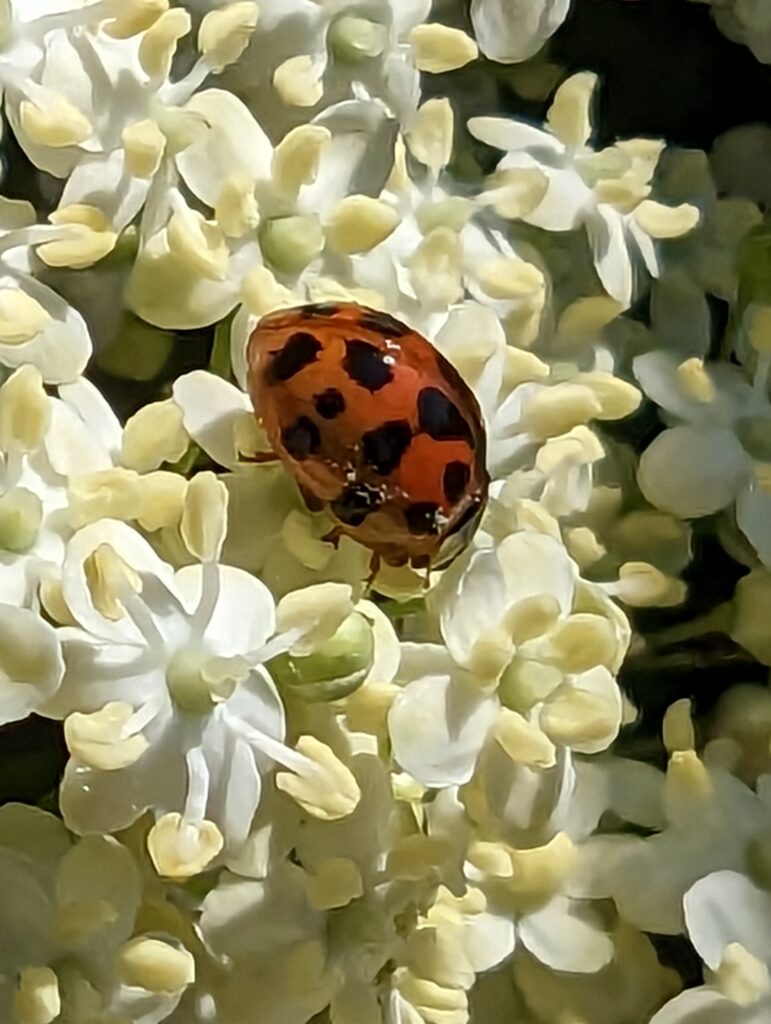
In conclusion, harvesting elderflowers is a delightful experience. With a little bit of know-how, you can make the most of your harvest and turn these fragrant flowers into a delicious treat that can be enjoyed all year round. So, put on your walking boots, grab your scissors, and head out into the British countryside to discover the wonders of elderflowers for yourself!
The Best Homemade Elderflower Cordial Recipe
Below is what I think is the best Elderflower Cordial recipe I’ve ever made. I’ve refined it over years of making Elderflower cordial. Indeed, whilst there are a few variables around the aroma of the flowers, time of day they’re picked and how sunny it has been that will inevitably mean each batch is slightly different, the recipe has proved wonderfully consistent so far.
The best homemade Elderflower Cordial
Course: DrinksCuisine: BritishDifficulty: Easy100
servings15
minutes5
minutes30
kcal20
minutesIngredients
20-25 Elderflower heads
1kg Sugar
3 Litres Water @ 80C
12g Citric Acid
2 Lemons juiced and peel
- To serve
Ice
Still water or Sparkling water
Directions
- Pick your elderflowers fresh around mid-morning.
- Inspect for bugs and give them a little shake to remove any debris before adding them to a large bowl.
- Heat your water to 80c. If you can’t control it that accurately, boil the water and leave to cool slightly. The elevated temperature will help release the flavour but not scald it like boiling water can.
- Cover and leave to steep for 24 hours.
- Pass the steeped liquid through a muslin or cheesecloth. The aim here is to remove all solids from the liquid.
- Add liquid to 1kg sugar. Add lemon juice, peel and citric acid.
- Bring to the boil for a few minutes until all sugar has dissolved.
- Pass the syrup through the muslin once more to remove the lemon peel.
- Decant into sterilised bottles.
- To serve
- Add around 15-20ml per 250ml of water. The exact amount if subject to taste so add more syrup to make the drink stronger or more water to help reduce any sweetness.
- Serve with plenty of ice to create a super refreshing summer drink.

